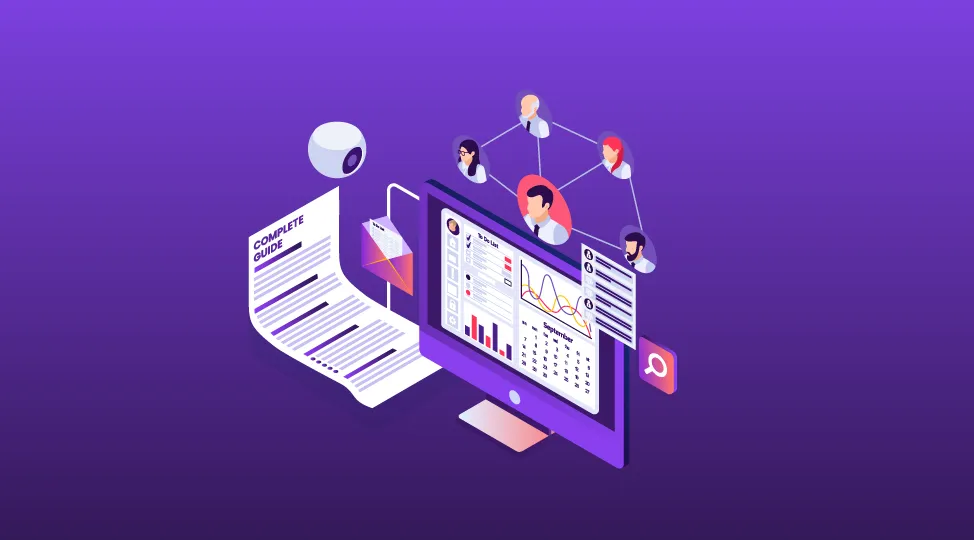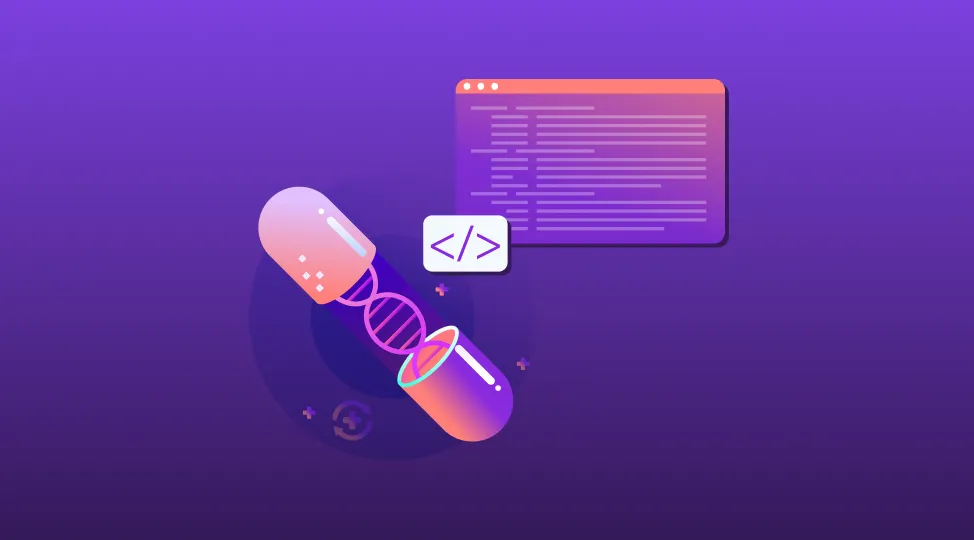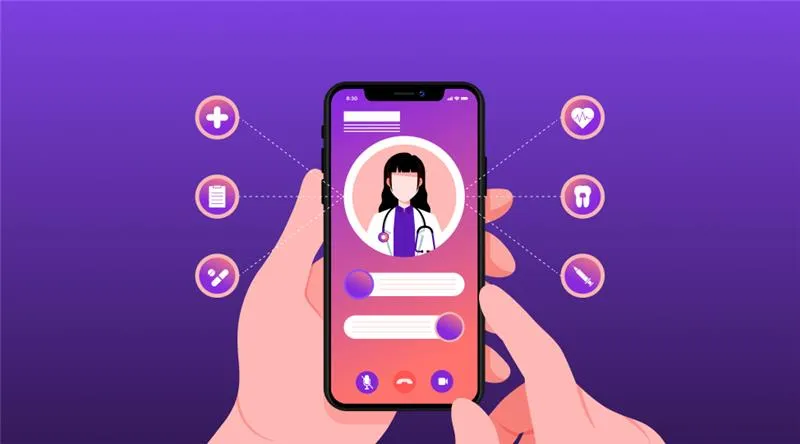Business

5 min

The digital transformation in healthcare is no longer on the horizon; it’s happening now. With rising patient expectations and growing demand for virtual care, healthcare mobile app development has taken center stage in modern medical innovation.

By Mayank Ranjan
06 May, 2025
From AI-powered diagnostics to real-time patient monitoring and virtual consultations, mobile apps are reshaping the healthcare industry. But building a compliant, secure, and scalable healthcare app is not as straightforward as launching a typical mobile product.
Startups and enterprises face complex challenges, such as navigating HIPAA and GDPR, integrating with legacy EHR systems, ensuring seamless UX across patient and provider interfaces, and aligning with fast-changing trends like SaMD and AI integration. This guide simplifies that journey. Whether you’re planning your first MVP or scaling an existing platform, we’ll walk you through everything you need to know in 2025, including estimated development costs, must-have features, compliance needs, and the emerging trends driving innovation forward.
Let’s decode the future of healthcare app development and help you build solutions that are not only functional but also future-proof.
According to Statista, mobile health (mHealth) users are expected to grow by over 60% year over year and will exceed $300 billion by 2025, highlighting the mainstream acceptance of digital care.
Telehealth adoption surged during the pandemic and has become a permanent fixture in modern care delivery. Patients increasingly expect on-demand access to medical professionals, prescriptions, and health records—anytime, anywhere.
AI integration in healthcare apps revolutionizes diagnostics, triage, and personalized health recommendations, drastically improving efficiency and decision-making.
Consumer behavior is shifting. Patients today want proactive, personalized, and seamless digital health experiences that mirror the convenience they get from banking, retail, and lifestyle apps.
With this rise in demand, the opportunity for forward-thinking startups and enterprises to create impactful healthcare applications has never been greater.
In the regulated world of healthcare, compliance isn't a feature—it’s a foundation.
To launch a healthcare app, organizations must fully comply with global data privacy standards such as HIPAA (for the US), GDPR (for the EU), and local health data mandates. These frameworks govern everything from how personal health data is stored and shared to what consent protocols must be in place.
The growth of healthcare app development comes with a parallel rise in regulatory responsibilities. Apps that handle sensitive health data must comply with global data protection laws, including:
HIPAA (for US apps managing PHI),
GDPR (for European user data),
SaMD regulations for clinical software.
These regulations directly influence app architecture. Development teams must design apps with privacy by design, secure APIs, data minimization techniques, and audit-ready systems. Failing to comply isn’t just risky—it can lead to legal repercussions and brand damage.
That’s why compliance is not an afterthought but a crucial early-stage priority in healthcare application development.

In 2025, healthcare app development has become more specialized than ever before. Healthcare apps aren’t built for "everyone"—they’re designed for specific users with different goals: patients managing chronic conditions, clinicians handling large caseloads, and digital-first startups building FDA-regulated products.
To succeed in this space, you need to understand the differences. Let’s break down the three primary categories of healthcare mobile apps—and what makes each one work.
The Problem
Patients often feel overwhelmed navigating the healthcare system—confused by paperwork, long wait times, and limited access to care.
Concern
Miss appointments, unmanaged conditions, and declining health outcomes.
The Solution
Patient-focused apps give individuals the tools they need to take control. These mobile-first solutions emphasize ease of use, self-service, and personalization.
Examples Include:
Appointment booking with real-time confirmations
Medication reminders with smart refill alerts
Wellness tracking: diet, sleep, fitness, and mental health
Chronic care tools for diabetes, asthma, and hypertension.
These apps are more than convenient—they’re clinically impactful. Syncing with wearables and connected devices enables real-time health monitoring, personalized interventions, and fewer ER visits.
The Problem
Doctors and nurses often operate in high-stakes environments with outdated systems that slow them down.
The Agitation
This creates delays, burnout, and errors that affect patient care.
The Solution
Healthcare mobile apps for providers are built to streamline operations, enable instant decision-making, and integrate with critical infrastructure like hospital systems and EHR platforms.
Key Capabilities:
EHR access and patient history lookups on the go
Real-time communication with care teams
AI-driven decision support (CDSS)
Secure lab result sharing and imaging access
Remote monitoring dashboards for ongoing care
These apps improve treatment accuracy, reduce admin overhead, and empower clinicians with tools they can trust.
The Problem
Traditional medical hardware can’t keep up with modern demands for real-time, remote, and AI-powered diagnosis.
The Agitation
Without software innovation, many conditions go undiagnosed or poorly managed until it's too late.
The Solution
Enter SaMD (Software as a Medical Device)—apps that can diagnose, monitor, or treat conditions without being tied to physical medical equipment. These tools are often powered by AI and are classified as regulated medical software under FDA and EU MDR guidelines.
Top Use Cases:
AI image analysis for cancer or eye disease detection
Real-time cardiac and glucose monitoring
Digital therapeutics for anxiety, COPD, or chronic pain
Predictive analytics tools for at-risk patient populations
Unlike typical mobile apps, SaMD must undergo clinical validation, risk assessment, and ongoing post-market reporting. For startups, this means involving regulatory experts early and building a roadmap that includes both tech and compliance.
Whether you're creating a fitness app or a Class II medical device, aligning your app’s category with its end users is step one. Knowing the difference will save time, reduce risk, and build real impact in your healthcare application development journey.
A well-built healthcare app isn’t defined by how it looks—but by how seamlessly it functions, protects patient data, and integrates with healthcare systems. Whether you’re designing for patients and providers or building a SaMD product, certain features are non-negotiable in 2025.
Let’s break them down by core functionality, integration capabilities, and intelligent automation.
User Authentication
Security is non-negotiable in healthcare app development. Apps must offer HIPAA-compliant user authentication features such as:
Biometric login (Face ID, fingerprint)
Two-factor authentication (2FA)
Secure token-based session management
These methods help protect sensitive patient data and reduce the risk of breaches, reinforcing user trust.
Scheduling and Reminders
Convenient access to care starts with easy scheduling. Incorporate:
Real-time appointment booking
Automated appointment and medication reminders
Calendar sync and notifications
These features improve patient adherence, reduce no-shows, and enable proactive care planning.
Communication Tools
Modern patients expect on-demand interaction. Integrate:
In-app chat for non-urgent questions
Secure video consultation
Push notifications for provider updates.
Such tools increase engagement and make care accessible even beyond clinic walls.
Advanced Integrations
One of the most valuable components of healthcare application development is integrating Electronic Health Records (EHR) systems. Benefits include:
Seamless access to medical history
Centralized patient data
Improved diagnostic accuracy
EHR sync ensures continuity of care across different providers and systems.
Payment Systems
Integrate secure and flexible billing systems to:
Process co-pays and insurance claims
Support multiple payment methods (credit, UPI, wallets)
Maintain financial transparency with invoices and summaries.
Ensure that all financial transactions are PCI-DSS compliant to avoid legal pitfalls.
Chatbots
AI-powered chatbots offer 24/7 patient triage and guidance by:
Answering FAQs instantly
Directing users to appropriate services
Assisting with pre-diagnosis via symptom input
They reduce the load on medical staff and enhance user satisfaction.
Predictive Analytics
Leverage AI integration for real-time, personalized health predictions:
Risk scoring for chronic conditions
Health tracking insights from wearable data
Early alerts for critical vitals
These tools enable preventive care, a significant focus in modern AI app development solutions.
Your healthcare mobile app can deliver a seamless and future-ready user experience by combining core functions, intelligent automation, and advanced integrations. These features aren’t just “nice to have” but essential in building trust, engagement, and real-world outcomes.
One of the most common questions stakeholders ask is: "How much does healthcare app development cost?" The answer varies significantly depending on your app’s complexity, features, technology stack, and regulatory requirements. Whether you're building a basic wellness tracker or an AI-powered diagnostic tool, understanding the cost factors upfront can help you plan smarter and avoid budget pitfalls.
Complexity and Features
The broader the app’s scope, the higher the development cost. For example, a simple healthcare mobile app with basic appointment booking and reminders will cost far less than a full-scale telehealth app or a SaMD (Software as a Medical Device) with real-time monitoring, AI-based triage, and EHR integrations.
Feature-driven cost escalators include:
Real-time chat and video consultation modules
Advanced AI and machine learning algorithms
Custom dashboards for providers and admins
Integration with third-party APIs (insurance, pharmacies, labs)
Each added feature increases development hours, QA testing time, and post-launch maintenance.
Development Team Location
Where your team is located plays a significant role in your overall healthcare app development cost.
US/Canada-based agencies: $150–$250/hour
Western Europe: $100–$200/hour
Eastern Europe & Latin America: $40–$100/hour
India/Southeast Asia: $25–$60/hour
Compliance and Security
Developing a HIPAA or GDPR-compliant healthcare app introduces added legal, architectural, and security-related complexities.
You’ll need to invest in:
End-to-end data encryption
Secure cloud infrastructure (e.g., AWS, Azure with HIPAA compliance)
Audit logging and access control systems
Legal reviews and documentation
Compliance can account for 15–30% of total app development cost, but it’s essential for protecting sensitive patient data and avoiding legal penalties.
Basic Healthcare Apps
Features: Scheduling, reminders, basic messaging
Timeline: 3–4 months
Estimated Cost: $30,000–$60,000
Ideal for early-stage startups testing a single use case or MVP.
Advanced Apps with AI Integration
Features: AI chatbots, EHR sync, diagnostics, wearable integrations
Timeline: 6–9 months
Estimated Cost: $80,000–$250,000+
Suited for scale-ups, hospitals, or enterprise healthcare platforms looking to innovate with deep tech and automation.
These ranges include design, development, testing, deployment, and post-launch support. However, ongoing maintenance, updates, and security patches may cost an additional 15–20% annually.
Accurately estimating costs is critical for long-term success. It helps you align technical goals with business outcomes—and build a healthcare app that delivers real value without financial surprises.
In 2025, healthcare mobile app development is being shaped by game-changing trends—from AI-driven diagnostics to connected health devices and telemedicine integrations. These innovations are not just adding features—they’re redefining patient care, doctor-patient relationships, and healthcare accessibility. Let’s explore the key trends and how leading brands are implementing them.
The pandemic acted as a digital accelerator, permanently altering how care is delivered. Today, telehealth apps are mainstream and preferred by millions globally.
Growth Statistics:
38x increase in telehealth use since 2020 (McKinsey)
Over 60% of US patients report using virtual care in the last 12 months.
Integration Strategies:
Healthcare mobile apps combine teleconsultation, e-prescriptions, lab test booking, and
EHR access into one seamless experience.
Real-World Examples:
Teladoc Health: Offers global virtual care services integrated with mental health and chronic condition management
Amwell: A popular US platform that integrates telehealth with insurance claims and provider scheduling
AI integration is one of the most disruptive forces in healthcare app development, from diagnosing conditions to enhancing personalized care.
Innovations:
SkinVision: Uses AI to assess skin cancer risk from a photo
PathAI: Supports pathologists by using machine learning to diagnose diseases from medical slides
Challenges:
Addressing data privacy and algorithm transparency
Ensuring fair, bias-free predictions across patient demographics
Complying with evolving SaMD regulations and ethical standards
AI delivers unmatched value but must be deployed responsibly within AI app development solutions for healthcare.
The fusion of healthcare apps with IoT and wearable devices has unlocked a new era of real-time preventive care.
Device Integration:
Modern apps sync effortlessly with:
Apple Watch (ECG, fall detection, blood oxygen monitoring)
Fitbit (activity and sleep tracking)
Dexcom G7 (continuous glucose monitoring for diabetes management)
Data Utilization:
By capturing real-time metrics like heart rate, sleep quality, and glucose levels, these apps:
Alert caregivers to emergencies
Enable personalized health coaching.
Empower patients to manage chronic conditions proactively.
Real-World Examples:
MySugr: Syncs with CGMs and glucose meters to help diabetics track sugar levels and insulin intake
KardiaMobile: Pairs with a mobile ECG device to monitor heart rhythms, detect AFib
These trends demonstrate how forward-thinking healthcare application development isn’t just about tech—it’s about delivering outcomes. The future of care is virtual, predictive, and always connected.
Creating a successful healthcare mobile app in 2025 involves more than cutting-edge technology. It requires a thoughtful balance of user needs, airtight security, and long-term scalability. Whether you're building for patients, doctors, or both, following these best practices ensures your healthcare application development process leads to a product that is compliant, reliable, and user-centric.
Designing for healthcare means designing for everyone, regardless of age, ability, or tech fluency. A user-first approach ensures higher adoption, better health outcomes, and reduced support costs.
Accessibility: Designing for Diverse Needs
Healthcare apps must accommodate a wide range of users—elderly patients, individuals with disabilities, or users in low-bandwidth regions. Best practices include:
WCAG 2.1 compliance for visual and auditory accessibility
Voice-to-text features and screen reader compatibility
High-contrast design, adjustable font sizes, and intuitive navigation
For example, Apple’s Health app includes VoiceOver support and dynamic text adjustments to assist users with vision impairments.
Usability Testing: Iterative Feedback and Improvements
No healthcare app should launch without rigorous usability testing. Involve real users—patients, nurses, doctors—throughout the development lifecycle. Use:
Wireframe testing
Beta testing with healthcare focus groups
Task-based UX studies to identify friction points
At Quokka Labs, we conduct multiple rounds of design validation through real-world simulations to ensure usability aligns with patient journeys and clinical workflows.
In healthcare, data protection isn’t optional—it’s legally mandated. Apps must be built with strong privacy frameworks to ensure compliance with HIPAA, GDPR, and regional regulations.
Data Encryption: Protecting Sensitive Health Information
Use end-to-end AES-256 encryption for data at rest and in transit. Also, implement:
Secure APIs with OAuth 2.0
Biometric login & multi-factor authentication (MFA)
Encrypted cloud storage (AWS, Azure, with HIPAA-ready architecture)
Regular Audits: Ensuring Ongoing Compliance
Compliance doesn’t end at launch. Regular security audits, penetration testing, and automated vulnerability scanning should be part of ongoing maintenance.
Quokka Labs uses DevSecOps practices to integrate compliance testing throughout the CI/CD pipeline, ensuring that every app update remains audit-ready.
Apps in healthcare often start small but must be ready to grow with your users and organization.
Modular Architecture: Facilitating Updates and Feature Additions
Use microservices architecture and modular design principles to:
Roll out new features without breaking existing functionality
Support integrations with wearables, EHRs, and billing systems
Enable quicker adaptation to evolving regulatory requirements.
Support Systems: Establishing Robust Maintenance Protocols
Post-launch, your app will require:
24/7 support to resolve critical bugs
Routine updates to maintain compatibility with OS versions
User behavior tracking to identify improvement areas
For example, MyFitnessPal maintains a dedicated incident response team to handle issues quickly—something all healthcare apps should emulate for trust and reliability.
By prioritizing accessibility, data security, and scalability, your healthcare app development journey can result in a truly impactful, long-lasting solution.
In 2025, the future of healthcare mobile app development will be defined by innovation, security, and patient empowerment. From must-have features like teleconsultations, EHR integration, and AI-powered insights to regulatory compliance and scalable architectures, successful apps must balance user experience with technical excellence.
We explored various healthcare applications, broke down the cost structures, and unpacked the industry's future trends, like AI, wearables, and telehealth. Whether you're building a patient-facing wellness app or an enterprise-grade SaMD platform, the key to success lies in thoughtful design, rigorous compliance, and long-term scalability.
If you're ready to turn your vision into a powerful, compliant, and user-friendly solution, let’s talk. At Quokka Labs, we craft healthcare apps that solve real-world problems backed by deep domain expertise and cutting-edge technology.
Contact Quokka Labs for Your Healthcare App Project
Let’s build the future of healthcare—together.
Top 11 Must-Have Features of a Custom Web Application in 2026
By Dhruv Joshi
5 min read
Generative AI Tech Stacks: Choosing the Right Tools for Scalable AI Development
By Dhruv Joshi
5 min read
Choosing Best Tech Stack for Web App Development: Performance, Cost, and Scalability
By Dhruv Joshi
5 min read
Top 9 Tech Stacks for Scalable Web Application Development
By Dhruv Joshi
5 min read

Business

5 min
Plan hr software development the practical way: must-have HRMS features, event-driven architecture, integrations, security controls, and a clear build roadmap. Use cost ranges, effort tables, and partner checklists to choose reliable hr software development companies. See persona-based workflows, a build-vs-buy matrix, and budget levers to launch an HRMS that reduces errors, speeds onboarding, and delivers audit-ready analytics.


Business

5 min
Learn how pharmacy management software development streamlines dispensing, inventory, billing, and patient engagement. This comprehensive guide covers software types, core modules, tech stack, step-by-step process, must-have 2026 features, costs, and tips for hospitals and independent pharmacies. Build secure, interoperable, cloud-ready pharmacy management software that reduces errors and improves care outcomes.


Business

5 min
Telemedicine app development is transforming healthcare by enabling secure, remote care through video, chat, and monitoring tools. Telemedicine apps support urgent care, chronic management, and mental health, while key features include e-prescriptions, EHR integration, and secure payments. Choosing the right telemedicine app development services partner requires proven healthcare expertise, HIPAA/GDPR compliance, scalable cloud architecture, transparent pricing, and strong post-launch support.


Feeling lost!! Book a slot and get answers to all your industry-relevant doubts